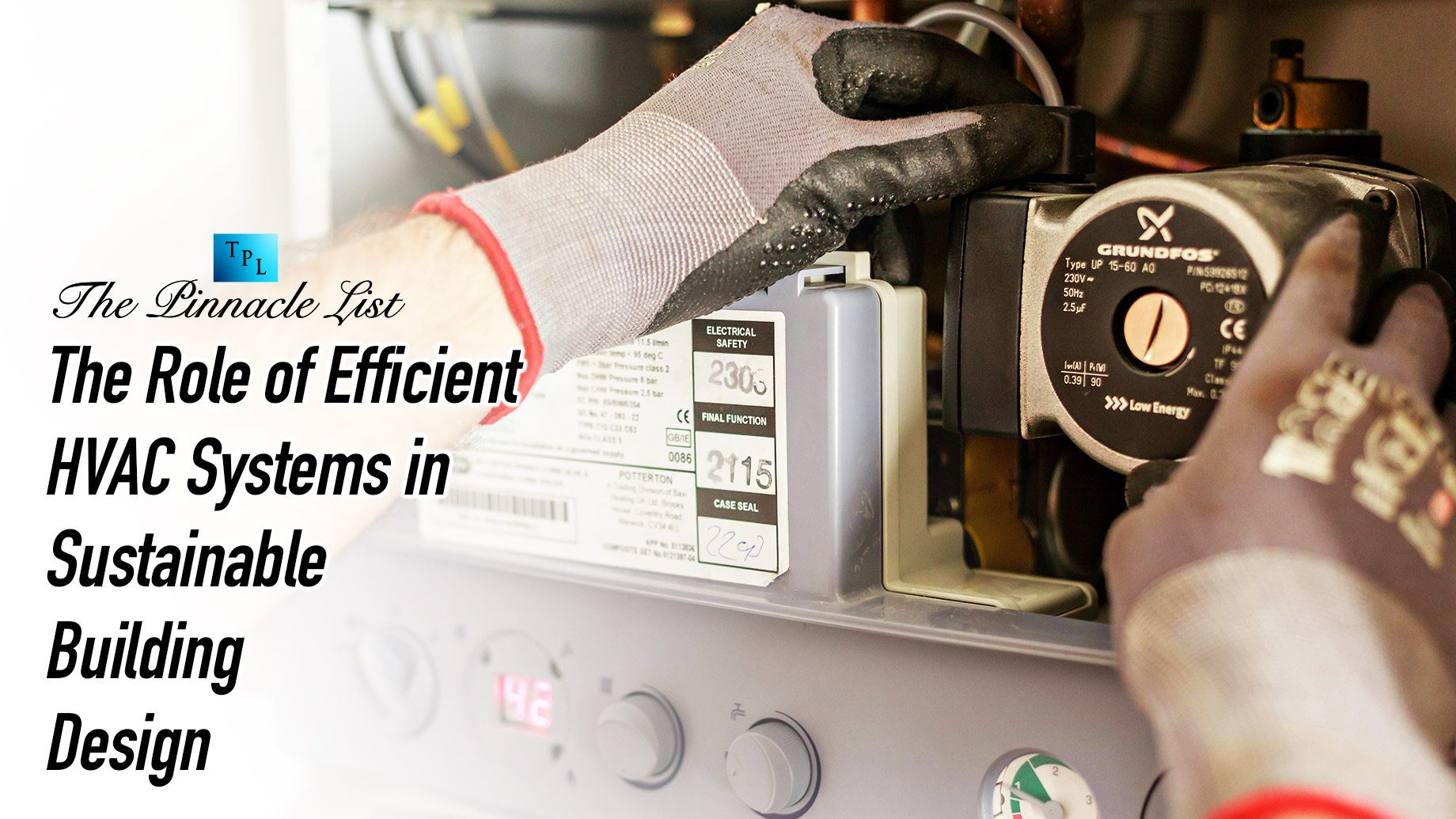
In today’s world, where environmental concerns are at the forefront of discussions about the future of our planet, sustainable building design has become a critical area of focus. As we look for ways to reduce buildings’ carbon footprint, one of the most significant factors influencing energy consumption is the heating, ventilation, and air conditioning (HVAC) system.
Efficient HVAC systems are not just about comfort; they play a crucial role in minimizing energy use and enhancing a building’s overall sustainability. This article will delve into how modern HVAC systems contribute to sustainable building practices, emphasizing the importance of design, maintenance, and, when necessary, air conditioning repair.
The Importance of HVAC Systems in Sustainable Buildings
In this case, HVAC systems consume a lot of energy and may represent a third or more of a building’s total energy consumption. As a result, they are essential for realizing sustainable design goals. Using effective climate control systems, specialists can decrease energy usage and CO2 emissions and simultaneously improve people’s health.
Sustainable building design aims to minimize building energy consumption, mainly the energy used for heating and cooling. This can be done by adopting enhanced features in HVAC systems that have been developed to work with high efficiency and reduced energy consumption.
For instance, VRF systems are variable refrigerant flow systems that can control the temperature in different building sections and save energy as they only condition the space that needs heating or cooling. Also, the latest heat pumps are efficient and can act as heating and cooling systems with less energy.
However, it is also important to note that the design of the HVAC system itself also significantly contributes to this process. One of the critical factors to consider is proper system sizing; an oversized HVAC system will switch on and off more frequently, thus drawing more energy and putting pressure on the system. On the other hand, if the system is too small, it will be tough for the same system to provide the necessary comfort levels, resulting in inefficiency and high costs. This is why the designers must be meticulous when estimating the heating and cooling load and choosing the right size for the system.
Integration with Building Design
Another critical issue of effective HVAC in green building design is the ability to coordinate the systems with the architectural layout of the building. Ducts, vents, and thermostats should be well positioned to facilitate airflow, which should be planned for during the design stage. For instance, running the ducts through unconditioned areas, such as the attic or the crawlspace, can entail considerable energy wastage. Instead, the ducts should be placed in the conditioned space within the building to reduce heat loss.
Other factors that are closely connected to the efficiency of HVAC systems include building orientation and insulation. For example, a well-insulated building that has been properly positioned to allow for natural lighting and airflow will use less energy to heat and cool the interiors. This, in turn, helps to minimize the pressure experienced by the HVAC system in a particular area, thus enabling it to work as expected.
A building can also incorporate natural ventilation and passive solar heating to increase sustainability. Designers can use these techniques to minimize mechanical heating and cooling, reducing energy usage. For example, a window placed to let fresh air into the building can help regulate temperatures, especially during the hot seasons. Therefore, there is no necessity for an air conditioner.
The Role of Maintenance and Repair in HVAC Efficiency
The installation of this HVAC system, the selection of the most appropriate design, and the installation of the system are essential; however, constant maintenance and timely air conditioning repair are equally crucial to achieving the system’s long-term functionality and longevity.
A good HVAC system will be properly maintained, using less power in its operation and resulting in a healthier indoor environment. Maintenance activities like filter replacement, coil cleaning, and refrigerant level checks should be conducted periodically to ensure small problems do not escalate into bigger systems that cause system failure or poor performance.
However, it is also crucial to pay attention to the need for repair work now and then if the car is to serve the intended purpose effectively. Minor problems like refrigerant leakage or a faulty thermostat should not be taken lightly as they are likely to cause the system to work harder and hence use more energy, which translates to expensive bills. Furthermore, if repair is not done as and when required, it would have detrimental effects on the HVAC system and its lifespan, which results in early replacement and is both expensive and harmful to the environment.
Conclusion
Proper management of heating, ventilation, and air conditioning systems are the fundamental essentials of green building technology. Besides lessening energy use and reducing greenhouse gas emissions, they also enhance the quality of the indoor environment. Proper coordination of HVAC systems with the architectural layout of the building or structure and appropriate maintenance, repair, and installation measures can help develop energy-efficient and eco-friendly buildings. This being the case, the efficiency of the HVAC systems will remain a pivotal asset as we progress in the search for sustainability to create a sustainable future for the world.